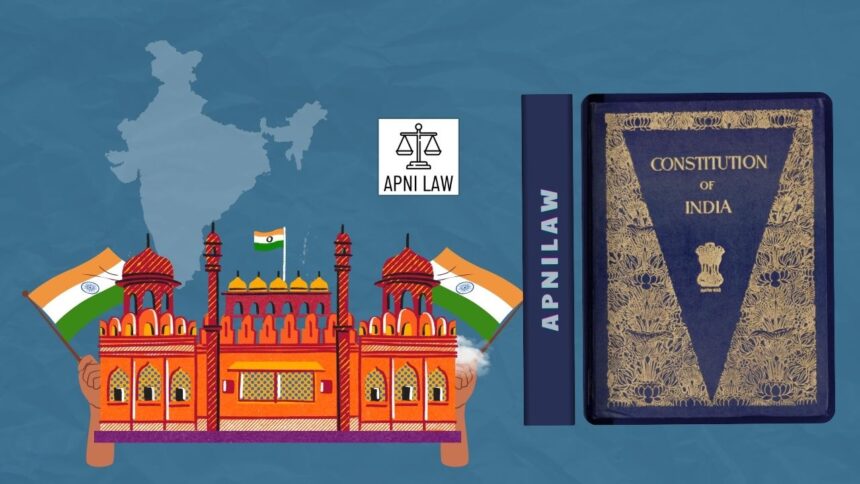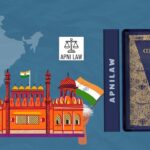The Kesavananda Bharati Case of 1973 marked a turning point in Indian constitutional history. It gave birth to the Basic Structure Doctrine, which restricts Parliament from altering or destroying the essential framework of the Constitution. The case remains the longest heard by the Supreme Court and continues to guide constitutional interpretation in India.
What led to the Kesavananda Bharati case?
The background of the case goes back to the land reform measures introduced in Kerala during the 1950s and 1960s. These reforms sought to redistribute land from large landholders and religious institutions to landless tenants and disadvantaged groups. The state justified these reforms as steps toward achieving social and economic justice. However, several religious institutions, including mutts, lost significant land due to these reforms.
Swami Kesavananda Bharati, the head of the Edneer Mutt in Kasaragod district of Kerala, challenged the constitutionality of these reforms in 1970. He filed a writ petition under Article 32 of the Constitution before the Supreme Court. He argued that the Kerala Land Reforms Act violated his fundamental rights to property, equality, and religious freedom. His petition questioned not only the validity of the state laws but also the extent of Parliament’s power to amend the Constitution.
Why Was The Case Historically Special?
The Kesavananda Bharati case became significant because it directly addressed the scope of Parliament’s amending power under Article 368 of the Constitution. Earlier judgments had taken conflicting stands. In Shankari Prasad v. Union of India (1951) and Sajjan Singh v. State of Rajasthan (1965), the Supreme Court upheld Parliament’s unlimited power to amend the Constitution, even to the extent of curtailing fundamental rights. But in Golak Nath v. State of Punjab (1967), the Court held that Parliament had no power to amend fundamental rights. This conflict created uncertainty and triggered debates over the supremacy of Parliament versus the supremacy of the Constitution.
The Kesavananda Bharati case became a forum to resolve this constitutional crisis. It was not just about land reforms but about defining the balance between constitutional permanence and parliamentary sovereignty.
How Did the Supreme Court Hear the Case?
A historic 13-judge bench, the largest in Indian judicial history, heard the case. The arguments continued for 68 days, making it one of the longest hearings ever conducted. Eminent lawyers such as Nani Palkhivala and the Attorney General of India presented detailed arguments. The judges considered whether Parliament could use its power under Article 368 to amend every part of the Constitution, including fundamental rights and the Preamble.
On April 24, 1973, the Supreme Court delivered its judgment in a 7:6 majority. The razor-thin margin highlighted the complexity of the issues and the sharp division among the judges.
What Did the Supreme Court Decide?
The Court ruled that Parliament does have the power to amend the Constitution under Article 368. However, it cannot alter or destroy the basic structure of the Constitution. This meant that while amendments were valid, they could not damage the essential identity of the Constitution.
The judgment rejected the absolute supremacy of Parliament. At the same time, it overruled Golak Nath by restoring Parliament’s authority to amend fundamental rights but with limits. The Court created a middle path that preserved the flexibility of the Constitution while safeguarding its core values.
What Is the Basic Structure Doctrine?
The Basic Structure Doctrine means that certain features of the Constitution are beyond the reach of Parliament’s amending power. Though the Court did not give an exhaustive list, it identified several principles that form the foundation of the Constitution. These include the supremacy of the Constitution, republican and democratic form of government, secularism, federalism, judicial review, and the dignity of the individual.
Later judgments expanded the scope of the doctrine. The Court added the rule of law, free and fair elections, independence of the judiciary, and the balance between fundamental rights and directive principles as part of the basic structure. Thus, the doctrine became a flexible yet powerful tool to prevent constitutional destruction through majoritarian impulses.
How Did the Doctrine Affect Indian Democracy?
The doctrine had a profound impact on Indian democracy. It ensured that the Constitution would remain a permanent framework that could not be dismantled by a transient majority in Parliament. It balanced the need for constitutional change with the need for stability.
During the Emergency period (1975–1977), the doctrine gained special significance. The government attempted to pass sweeping constitutional amendments, including the 42nd Amendment, which sought to give Parliament unlimited power to amend the Constitution. However, in Minerva Mills v. Union of India (1980), the Supreme Court struck down parts of the 42nd Amendment by applying the basic structure doctrine. This reaffirmed that even during extraordinary times, Parliament could not override the fundamental identity of the Constitution.
How Has the Doctrine Evolved In Later Cases?
The Kesavananda Bharati ruling set the foundation, but subsequent cases gave depth and clarity to the doctrine.
In Indira Nehru Gandhi v. Raj Narain (1975), the Court applied the doctrine to strike down a clause that excluded judicial review of the Prime Minister’s election. It held that free and fair elections were part of the basic structure.
In Minerva Mills v. Union of India (1980), the Court declared that limited amending power itself forms part of the basic structure. Parliament cannot use Article 368 to convert itself into a supreme body without checks and balances.
In Waman Rao v. Union of India (1981) and I.R. Coelho v. State of Tamil Nadu (2007), the Court reaffirmed the doctrine by holding that even laws placed in the Ninth Schedule of the Constitution after April 24, 1973, could be reviewed if they damaged the basic structure.
Thus, the doctrine has become a living principle, consistently protecting constitutional values from excesses of legislative power.
Why Is the Kesavananda Bharati Case Considered A Landmark?
The Kesavananda Bharati case is a landmark because it established the supremacy of the Constitution over Parliament. It reinforced the idea that democracy in India is not just about majority rule but about preserving fundamental values. By protecting the Constitution from being dismantled, it strengthened judicial review and maintained the balance of power between organs of the state.
It also gave hope to citizens that their rights could not be permanently taken away by legislative action. The case became a symbol of judicial courage and constitutional resilience. Even today, it is considered the most important judgment in Indian legal history.
What Was the Personal Impact Of the Case On Kesavananda Bharati?
Interestingly, Swami Kesavananda Bharati himself did not directly benefit from the case. The land reforms in Kerala eventually continued with certain modifications. His mutt lost land despite his challenge. However, his petition indirectly gave India its most important constitutional safeguard. Kesavananda Bharati became remembered not for his religious role but as the petitioner who triggered the birth of the basic structure doctrine.
How Does the Doctrine Influence the Constitution Today?
Today, the basic structure doctrine serves as a shield against arbitrary amendments. It ensures that India remains a constitutional democracy with essential features intact. Parliament can still make amendments to adapt to changing times, but it cannot cross the boundaries set by the doctrine.
This principle has provided India with stability during political crises, changes of government, and attempts at authoritarianism. It has also given citizens confidence that the spirit of the Constitution will outlast temporary political pressures.
For any specific query call at +91 – 8569843472
Conclusion
The Kesavananda Bharati Case (1973) remains the most significant constitutional judgment in India. It balanced the need for constitutional flexibility with the need to preserve core values. By creating the Basic Structure Doctrine, the Supreme Court ensured that the Constitution would endure as the guiding framework of Indian democracy. The doctrine has been repeatedly tested and reaffirmed, making it the cornerstone of constitutional law in India.
The case shows that while governments may change and political powers may shift, the fundamental spirit of the Constitution must remain inviolable. The legacy of Kesavananda Bharati lies in securing this principle for future generations.








